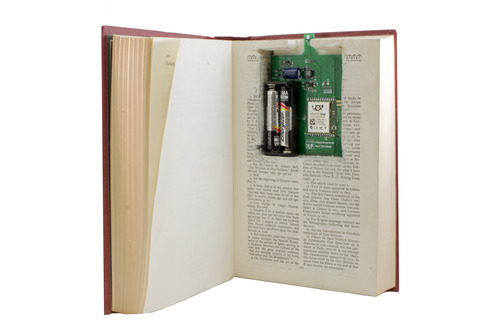Juan Bosco Albanell Flores is a Maker in Residence at Electric Imp and a senior at Princeton University, where he is majoring in Electrical Engineering.
Home climate control is quickly becoming Internet connected, with Nest’s thermostat at the forefront. While these newly emerging devices are a significant improvement over their predecessors in terms of customizability and user experience, smart thermostat systems are not yet smart enough due to their antiquated legacy. Current generation thermostats still necessitate wall mounting, which is not the most efficient location for a temperature sensor, and typically require complex wiring in your home. A wall mounted unit also becomes just another limited UI when coupled with an app.
These issues served as the motivation for “shelºF”, my internship project at Electric Imp. The project was intended to incorporate the Electric Imp platform and provide a fully wireless solution for the Internet-connected thermostat, which features three components:
- shelºF Sense: hidden temperature sensors to place around the home
- shelºF Act: an actuator to turn on the central fan, heater or air-conditioner
- shelºF Control: a simple app to control it all

The first shelºF Sense device is the TempBook, a small board designed to fit inside a hollowed-out book and blend into any room in your home. This board integrates an imp to push temperature readings from the Si7021 temperature sensor to the Internet. The advantage of using the imp to make periodic measurements is its ability to sleep and disconnect from the Internet, which significantly improves battery life. By using this feature and only connecting to the Internet when there is a significant temperature change, the TempBook can run for a year on just two AAAs!

The shelºF Act unit is a straightforward and low cost piece of hardware which has one or more relays connected to an imp. For this project it was built by connecting an April breakout board to an off-the-shelf relay breakout board. The software, on the other hand, is much more complex since it behaves as the master of the system where all the TempBooks push their readings. This is another advantage of using the Electric Imp platform since there is no need for an external server setup. All the different sensor readings and states can be saved in the control unit’s agent that then determines which devices to turn on.

The final component, shelºF Control, is an iOS app that performs the basic functions one would expect from a thermostat. The goal of shel°F Control is to move away from the basic idea of a “thermostat” which attempts to maintain a constant temperature. Instead, shelf°F Control adjusts the temperature in the house based on how the user is feeling. In other words, the specific temperature does not really matter. It is all about comfort. The app can manage several rooms, allowing the user to set several targets and maximize comfort throughout the house.
Moving forward, the project will need a learning algorithm to adjust to differences in room-to-room temperature variations. It can also be improved by detecting which rooms are in use, and accomplished by adding motion sensors and/or iBeacons to the shel°F Sense node.
With these add-ons, the shelºF could rival products like the Nest thermostat while offering a lower price point, simpler installation and setup, and the ability to have more flexible and efficient multi-room temperature regulation.
The shelºF project would not have been possible without the mentorship and guidance I received during my internship at Electric Imp, which ranged from PCB design and prototyping to IoT specific software guidelines.
If you are interested in following in my footsteps, check out the Maker in Residence information on the Electric Imp Jobs page.
Juan Bosco Albanell Flores